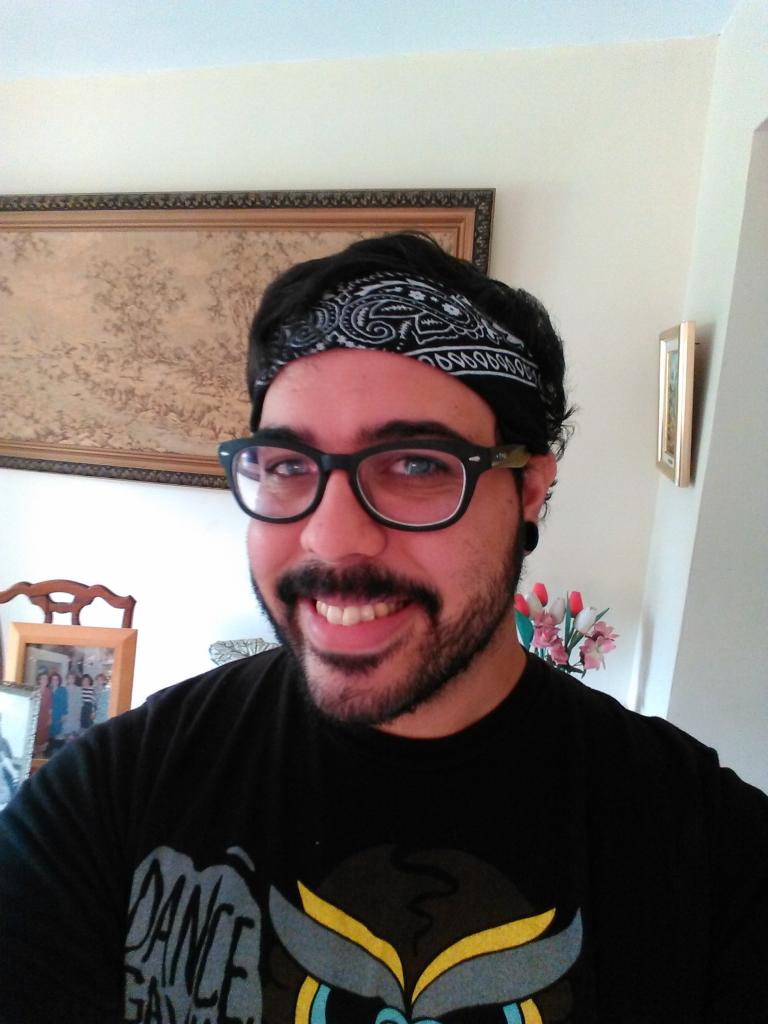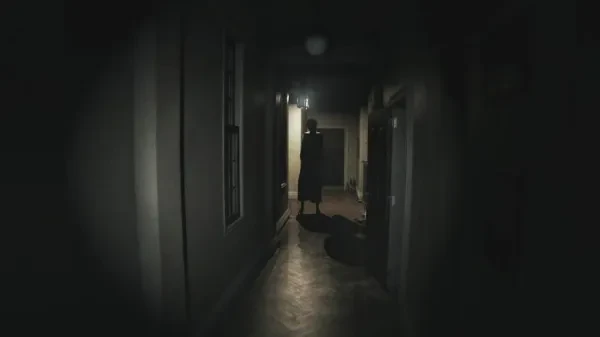
Fear is what fuels us
Although fear is an emotion which all humans have there are many of us, gamers or not, that enjoy the feeling of being scared. Fear heightens our senses, it makes us more excited, makes us feel more “human”. Fear of the unknown makes us curious, fear of death keeps us alive. While it’s true that not everybody embraces this emotion, no one can deny that when the lights are off and strange noises surround them, they feel a certain rush. While close to danger or death itself we feel more alive. That is what it means to be human.
So it’s no surprise that scary video games are extremely popular although it must be said that this hasn’t always been the case. Horror games used to be a rare thing, good ones were even rarer. However there are some gems that helped make the genre popular and of course, made us pull up the covers and leave the hall light on.
2D Horror: The birth of fear
It may come as a bit of a surprise that there was such a thing as a 2D horror video game. For a game to be truly scary it needs to build atmosphere. That’s achieved by lighting, sound effects, music and imagery. With the technological limitations of the 80s and early 90s, this was almost impossible to do. However, certain games like 1986’s Uninvited and 1989’s Sweet Home, were able to deliver a scary experience (for the times).
Sweet Home, which was based on the Japanese horror movie of the same name, was very influential for the genre. It used creative storytelling through the use of diary entries and cut-scenes in order to effectively tell the story while creative use of item management and limited healing kept the difficulty and thus, the tension, high.
This game is well known for having inspired Resident Evil, one of the, if not THE most iconic horror game of all time. Despite the limited technology, Sweet Home was able to deliver a genuine horror experience using disturbing imagery and death scenes for characters. This game made use of revolutionary gameplay mechanics at the time such as quick time events, multiple endings and permanent death of player characters.
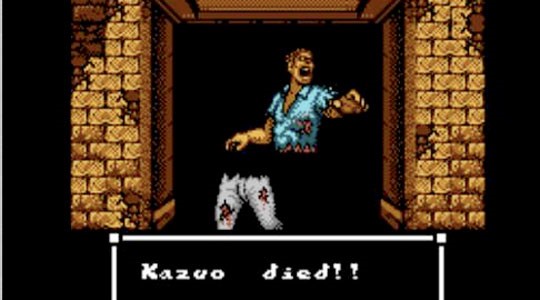
One of the various death scenes in Sweet Home
Another great tool that famicom-era video games had in order to set the atmosphere was the music. Electronic Arts’ 1989 Project Firestart effectively used dynamically triggered music in order to build tension and help with storytelling. Other features such as cut-scenes, open exploration and limited ammo helped cement this title as one of the best of its generation.
While being heavily inspired by the Ridley Scott’s masterpiece Alien, Project Firestart was able to establish its own unique identity through its creative backstory and the gameplay mechanics it used to tell that backstory, something that was basically unheard of back in 1989.
3D and the golden age of horror games
As technology kept evolving, storytelling techniques in video games improved. Music quality, graphics quality, game length, all of these were features that really improved with the arrival of 3D. Early on though, when the technology was still in its infancy, games had to be simple. The first fully 3D horror game, Doctor Hauzer, was kind of an oddball as far as horror games go in the fact that it didn’t feature any enemies. The antagonist of the game was a sentient house in which the game itself took place in, meaning that the dangers to the player character came in form of various traps and puzzles.
As time went on, game design improved. 3D games as a whole, not only of the horror genre, began to really come into their own and we started seeing features and graphics that at the time were mind blowing. This era saw the release of what are arguably the 2 best and most influential horror games of all time, these being 1996’s smash hit and original survival-horror game Resident Evil and 1999’s incredibly scary Silent Hill.
While similar in style, it’s important to note their different approaches to horror. Resident Evil mixed action with visceral horror, bringing a sometimes eerily scary, sometimes action packed story that had never been seen before in the gaming community.
I remember being 9 years old, playing Resident Evil for the very first time and not being able to get past the first zombie encounter, not due to game difficulty, but because I was scared out of my mind. I had never seen such detailed imagery in a game, Resident Evil being one of the first PS titles I played and the first horror game I was ever exposed to. The cinematic leading up to the encounter was the perfect touch and scared me more than the actual enemy. This has made it one of the scariest moments in video gaming for what it was at the time.
This sentiment was one I shared with many gamers at the time, the entire community was taken by storm and it changed the face of video game horror forever.
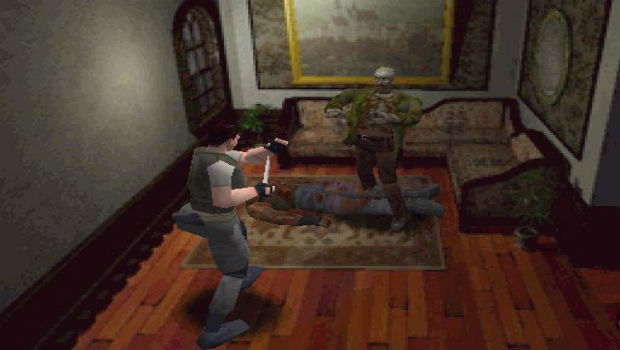
The first zombie encounter in Resident Evil haunted me as a kid
Resident Evil successfully blended heart pounding terror with fast paced action to deliver a gaming experience that had never been seen before. Limited ammo and healing items kept the tension high, as sometimes it was better to run and conserve your items for a boss enemy but you knew that at some point you had to go back and face the threats you had left behind. Resident Evil had a lot of backtracking but it would always change things up. You could go through an empty hallway lined with windows to reach a key only to discover that on the way back, zombie dogs would jump through the windows with no warning and scare the pants off you! This made backtracking a genuine original experience as you never knew what had changed.
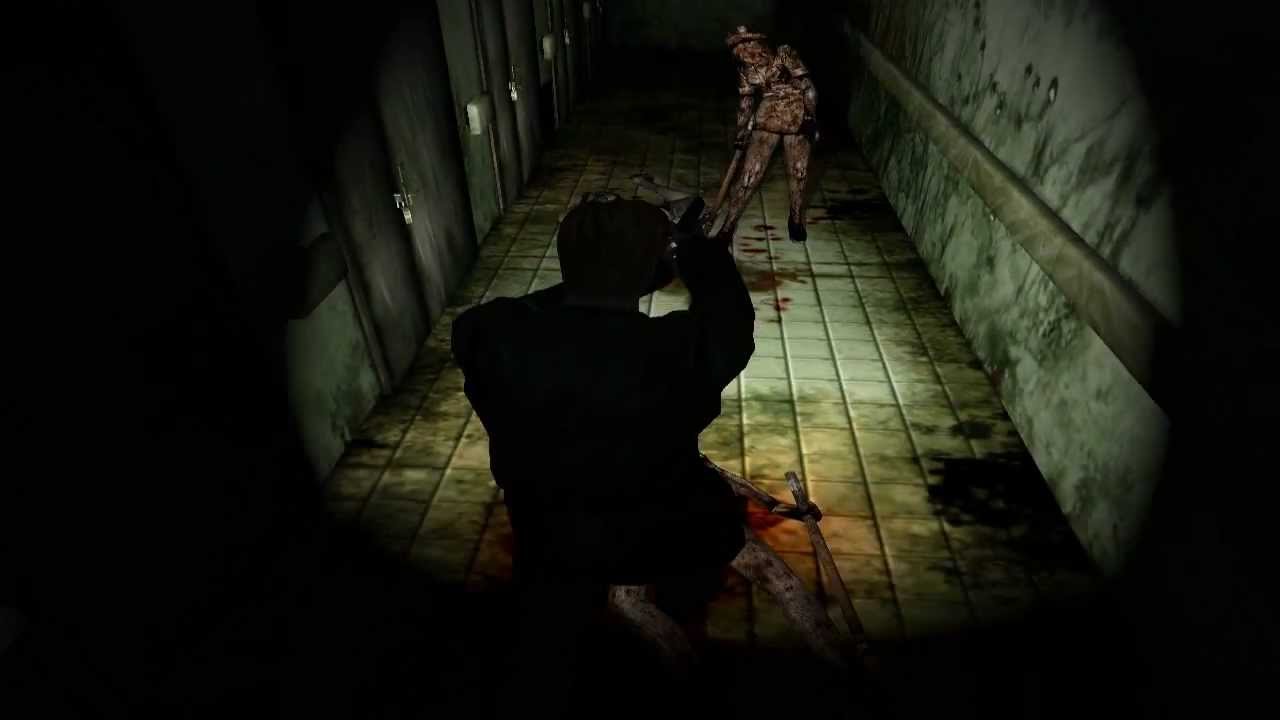
The hospital, one of the most terrifying sequences in Silent Hill
Silent Hill on the other hand, did away with the action and doubled down on the psychological horror. Instead of visceral horror, it employed disturbing imagery and a deep, well fleshed out story in order to deliver a truly unique experience. In this game, the protagonist awakes in the strange town of Silent Hill with no idea how he got there. To make matters worse his daughter is missing. What follows is a journey into a depraved world of the occult and ancient evils.
Lighting was one of the greatest tools used to create fear in Silent Hill as most of the game is spent either outdoors in an environment covered by very thick fog or indoors with no light besides a small flashlight attached to the player’s chest, making detection of the game’s many enemies difficult and it adds a very real sense of fear as it’s hard to tell where a threat is coming from until it’s right on you.
The commercial for Silent Hill, almost as creepy as the game itself. Almost.
The only thing you have to alert you to a monster’s presence is a small radio that emits static when an enemy is near. Even though it’s designed to help the player, the sudden sound of static growing ever louder as something approaches creates a very genuine feeling of fear and helplessness. It was this feeling of hopelessness that really allowed Silent Hill to move away from being a “scary” game and become a truly horrifying experience.
The advent of HD and the rise of indie horror
In the mid 2000’s, HD gaming was just starting to come into its own. We saw the release of the first true HD consoles in the PlayStation 3 and the Xbox 360, as well as great advances in PC video rendering technology. This, of course, prompted the development and release of many great horror games.
Although the sequels changed the formula quite a bit, the original Dead Space really helped maintain the popularity of the horror genre and helped it find its place in the new millennium with its great graphic quality and fleshed-out story. Like Silent Hill, Dead Space kept lighting and music to a minimum, causing the payer to rely on game sounds and a small light attached to their weapon in order to navigate the massive environment.
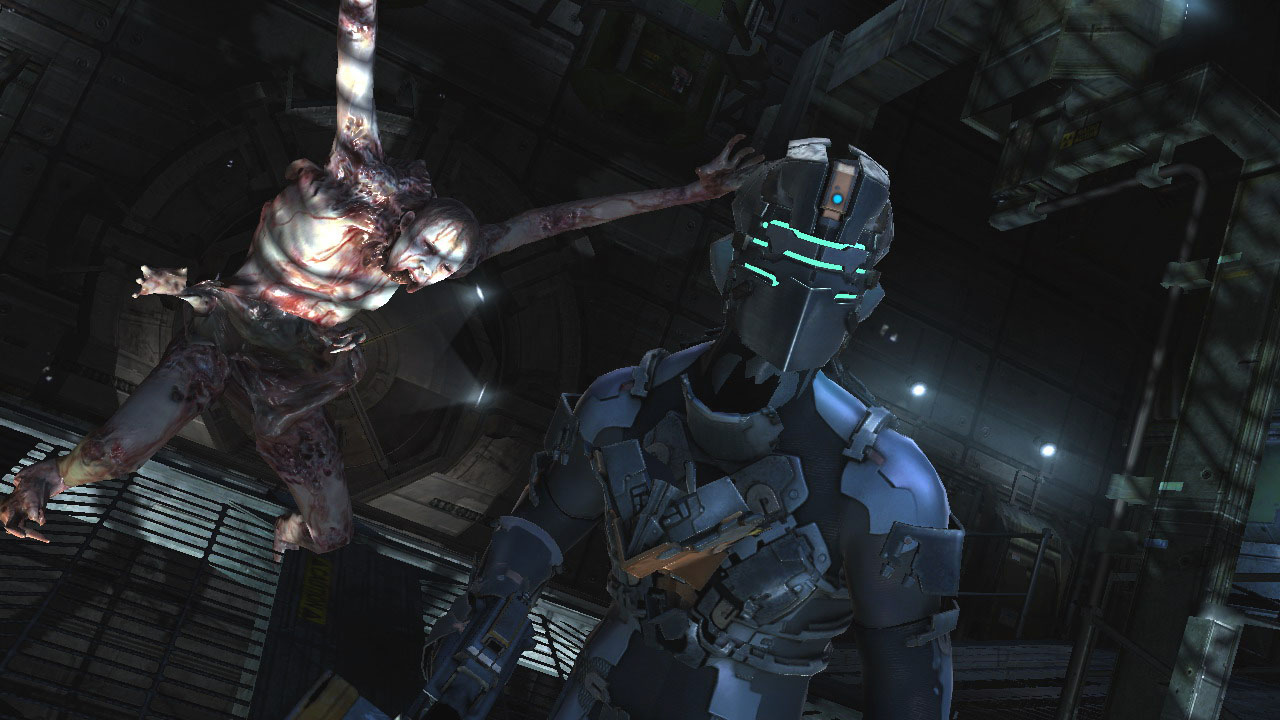
Dead Space's protagonist Isaac Clarke being ambushed by a Necromorph
Although very scary and extremely entertaining, Dead Space marked a change in the genre. True horror began to mix with action, much more so than in Resident Evil. This is what I meant when I said the Dead Space sequels changed the formula.
While keeping their horror roots, they really went all out on the action aspect and failed to deliver a true horror experience, which is what many gamers expected. Due to its immense popularity, many developers adopted this action-horror formula and the in the late 2000’s we saw a decline of real horror.
That’s where the indie games come in. Where AAA developers were more preoccupied with making an action game with “scary” visuals, indie developers and fans of the genre began to work on a way to bring back true horror to the gaming scene. One of the “stand out” titles of this time was Amnesia: the Dark Descent by indie developer and horror specialists, Frictional Games.
This title did away with all run-and-gun style of horror games at the time and instead embraced its horror roots and used physics based puzzles to suck the player into a world where fighting monsters was impossible. Instead you had to solve puzzles and attempt to either hide or escape from the game’s many terrifying enemies.
Gameplay of Amnesia: The Dark Descent, one of the best indie horror games of all time
Thanks to the success that Amnesia enjoyed, the horror genre became revitalized and more indie developers, as well as AAA came to embrace real horror again and starting putting out great horror games. Among these are Soma (also by frictional games), Outlast, Slender and The Evil Within just to name a few.
While each approached horror in a different fashion, all of them did their job well in delivering a scary and entertaining product. Most if not all of these games took the Silent Hill approach in that they dealt mostly with psychological horror and kept the mood dark and dreary with the use of low lighting and creepy audio.
However I couldn’t talk about indie horror without at least acknowledging the gaming sensation that has gripped the internet. That being Five Nights at Freddy’s and its sequels. Five Nights at Freddy’s or FNAF for short are a series of games in which the protagonist (a different person in each game) has to survive in a family themed restaurant for 5 nights where haunted animatronics are trying to kill them.
This game uses one of the “cheapest” scare tactics, that being the jump-scare, to deliver its brand of horror. However, FNAF did this right by introducing different factors which the player had to focus all their attention on, so when they failed and were jump-scared the fear was real as it was unexpected and very sudden. The fear of failure then caused the player to become nervous and thus, more prone to make mistakes and get jump-scared. It used a Dark Souls approach to story telling in which very little is revealed openly, most of it coming from easter eggs and secrets.This made it so that people were hooked trying to figure out the sotry while being scared over and over again.
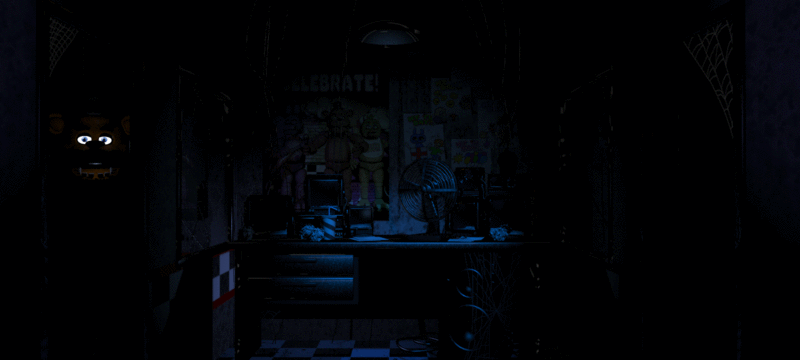
Freddy about to kill the player due to the power running out
In the original FNAF, players assumed the role of a night security guard at a haunted family pizzeria. They had to manage their power consumption throughout the night in order to keep the animatronics out of their office.
If the power ran out all the doors would open and the lights would go off, ensuring the player’s death. Sometimes it was quick, other times it would take longer so you never knew exactly when the attack was coming, adding to the fear factor.
Scary video games have changed a lot over the years and will continue to do so. They’ve come in all shapes and sizes and have dealt with every theme from haunted houses to renegade AIs. New technologies will give birth to new ways of scaring gamers and while we’re seeing a resurgence of “true” horror now, that may change.
We may go back to the action-horror of the mid to late 2000’s or maybe there’s some unknown mix of genres that we have yet to see that works very well. For better or worse, horror games are here to stay and while it’s hard to say what the next great horror title will be or how it will play, one thing is for sure. We won’t be turning off that hallway light anytime soon.
